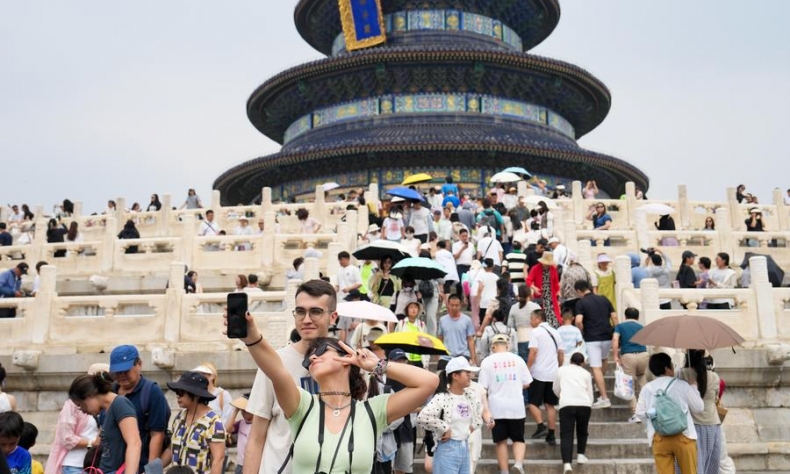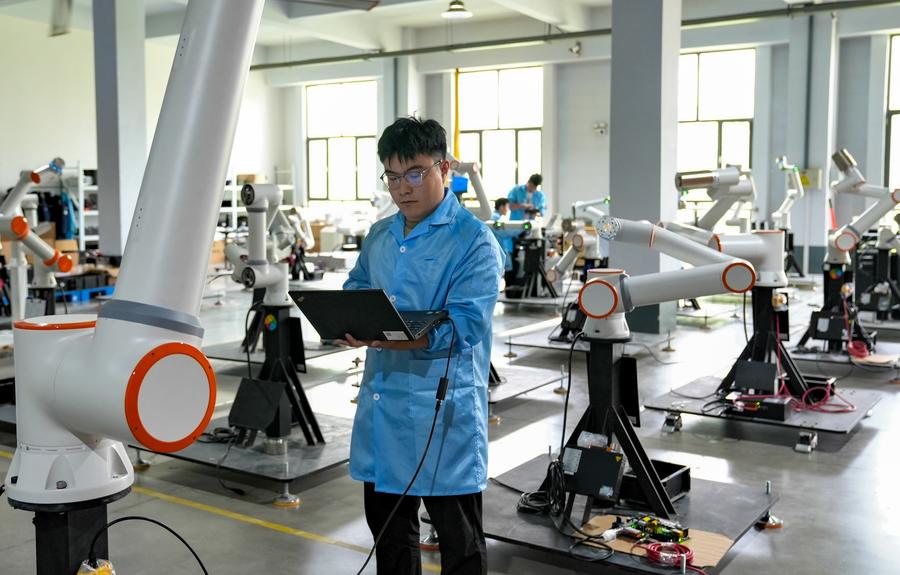Reforms Generate Economic Steam

China’s steady recovery has prompted international institutions to elevate their predictions regarding China’s 2024 economic growth. Such buoyant optimism is undoubtedly a shot in the arm to the global economy’s faltering recovery amid challenges and uncertainties.
A surging influx of international visitors to the Middle Kingdom is reflected in the prominent “China travel” buzzword on social media. The 72/144-hour visa-free transit policy for foreign nationals from 50-plus countries drew 14.64 million tourists to the country in the first half of this year – a year-on-year increase of 152.7 percent, according to the National Immigration Administration (NIA). Meanwhile, WeChat Pay, one of China’s major mobile payment platforms, now allows users to link bank cards from six international banks to their WeChat account, so further enhancing foreign travelers’ China experience.
The 72/144-hour visa-free transit policy has played a pivotal role in the country’s high-standard opening-up, by facilitating people-to-people exchanges and promoting cooperation between China and other countries, according to an NIA statement.
The Resolution of the Central Committee of the Communist Party of China on Further Deepening Reform Comprehensively to Advance Chinese Modernization, adopted at the third plenary session of the 20th CPC Central Committee on July 18, 2024, featured the phrase “opening up” 25 times. This signifies the immense importance that the CPC attaches to this state policy and its determination to integrate the country with the rest of the world.
There is, among the reform plans that this document encompasses, a chapter dedicated to “Pursuing High-Standard Opening-up” which dispels the misgivings of certain international observers about the country’s development direction. Opening-up is a defining feature of Chinese modernization. The country will continue to promote reform through opening-up, according to the Resolution. The document elaborates on such aspects as: steadily expanding institutional opening-up; deepened foreign trade structural reform; further reform of the management systems for inward and outward investment; optimization of the layout for regional opening-up; and improved mechanisms for high-quality cooperation under the Belt and Road Initiative.
With its GDP having expanded by five percent in the first half of this year, China continues to be a vital engine for global economic growth. Support from policy incentives, rebound in external demand, and development of new quality productive forces have all contributed to the expansion. Particularly noteworthy is the country’s output of smart and green products – such as integrated circuits, service robots, new energy vehicles (NEVs), and solar panels – which have maintained double-digit growth, so underscoring their role as new growth drivers, and showcasing the huge potential of new quality productive forces in spurring development. Meanwhile, China’s investment in hi-tech manufacturing increased by 10.1 percent and that in services by 11.7 percent, in the first half of this year – both well above the average 3.9 percent growth of the country’s fixed-asset investment.

New growth drivers and the upgrading of traditional industries enable the country’s growth momentum to counter both domestic and overseas headwinds. The newly-released Resolution sets great store by fostering new quality productive forces. While calling for great efforts to “pursue innovation in key generic technologies, cutting-edge technologies, modern engineering technologies, and disruptive technologies,” the Resolution stresses “revolutionary breakthroughs in technology, innovative allocation of production factors, in-depth industrial transformation and upgrading, and the optimal combination of laborers, means of labor, and subjects of labor as well as their renewal and upgrading.” The Resolution also advocates full integration of the real economy and the digital economy – through advancing new industrialization, promoting growth and expansion of advanced manufacturing clusters, and making the manufacturing sector higher-end, smarter, and more eco-friendly.
Head of China for Singapore’s state investment company Temasek Wu Yibing recently observed, according to Xinhua, that the Chinese economy’s comparative advantage is largely attributable to research and innovation. In the first half of the year, the country’s hi-tech manufacturing industry registered a strong year-on-year growth of 8.7 percent. Fierce competition among manufacturers is speeding up the application of humanoid robots to sectors across the board. A Ministry of Industry and Information Technology guideline states China’s aim to establish a preliminary innovation system for humanoid robots by 2025, and form a secure and reliable industrial and supply chain system by 2027. A Bloomberg article published on July 16 noted that China’s long-term quest for high-quality growth is starting to bear fruit. Meanwhile, The Economist also acknowledged China’s role as R&D lab for multinational corporations.
The country’s rosy development prospects have, moreover, sustained foreign investors’ confidence in its market. Spanish manufacturer of metal components Gestamp has established 14 factories and two R&D centers in China since beginning operations in the country in 2007.
“China boasts a vast, innovative and dynamic auto market,” said Antonio Lopez Arce, CEO of Gestamp’s Asia division, according to Xinhua.
The country’s shift towards NEVs has attracted sizable foreign investment. In April 2024, BMW announced an additional RMB 20 billion investment in its production base in Shenyang, with a view to localizing the production of a new generation of BMW models by 2026. German auto supplier ZF Group, meanwhile, launched an NEV parts industrial park in Shenyang in 2023, with an investment of RMB 2.2 billion.
China’s steady recovery has prompted international institutions to elevate their predictions regarding China’s 2024 economic growth. Both Barclays and Goldman Sachs have raised their forecasts to five percent, the former from the previous 4.4 percent and the latter from 4.8 percent. The International Monetary Fund also adjusted its forecast of China’s economy to five percent, up 0.4 percentage points from the previous one. Such buoyant optimism is undoubtedly a shot in the arm to the global economy’s faltering recovery amid challenges and uncertainties.
 Facebook
Facebook
 Twitter
Twitter
 Linkedin
Linkedin
 Google +
Google +










